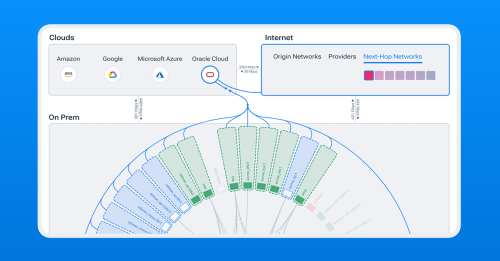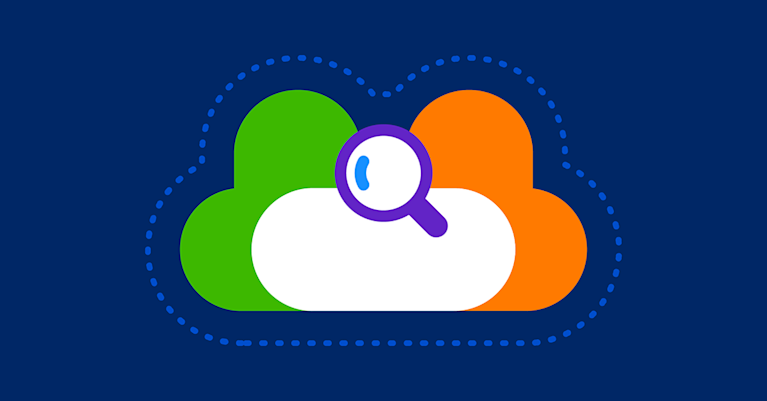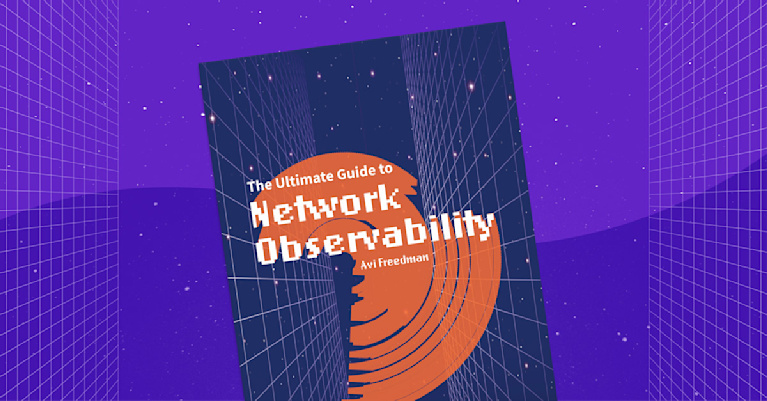Kentik Expands Hybrid Cloud Observability with OCI Support


Summary
Kentik now provides network insight into Oracle Cloud Infrastructure (OCI) workloads, allowing customers to map, query, and visualize OCI, hybrid, and multi-cloud traffic and performance.
Navigating the oceans of hybrid and multi-cloud computing requires a compass. As software infrastructure has evolved with abstractions up the stack, the network has remained as the critical foundation that connects distributed apps and services to each other, and to users. So network observability is your compass through rising complexity, a strategic asset empowering enterprises to make decisions with confidence and clarity. With today’s announcement of Oracle Cloud Infrastructure (OCI) support in Kentik Cloud, Kentik delivers understanding of all your critical cloud workloads.

Why OCI observability?
OCI’s comprehensive cloud services suite offers robust compute, storage, and networking capabilities. It’s non-trivial to ensure performance, security, and cost efficiency when migrating or expanding infrastructure to leverage these OCI capabilities. Network observability helps by reducing risk, improving outcomes, and minimizing the impact of common, costly challenges such as:
- Prolonged, unexpected migration downtime due to forgotten services or infrastructure
- High, unexplained egress traffic costs driven by elephant flows
- Compromised data when development-phase security policy mistakenly ends up in production
Network traffic analysis helps engineering teams understand which component microservices map to target applications. Live network traffic visualization makes the routes connecting internal and third-party services to deliver end-user experiences instantly recognizable. Flexible query capabilities quickly reveal exactly who is talking to whom at any given moment.
Kentik, the leader in network observability, answers all of these questions, providing deep insights into network performance, security, and traffic patterns. Use Kentik Cloud’s new OCI support to:
- Collect, analyze, and visualize flow logs generated on OCI in Kentik’s Data Explorer
- Automatically visualize OCI and hybrid topology with the new Kentik Map for OCI
- Rapidly answer any question about network traffic between OCI and AWS, Google Cloud, Azure, data centers, SD-WAN, or the internet
OCI and multi-cloud network visibility in the enterprise
Modern enterprises may not always enter into multi-cloud architectures intentionally, but these distributed environments are becoming a necessity for reliability, cost control, and business continuity. With this necessity comes complexity. Managing networks across multiple cloud providers can lead to expensive incidents, inefficiencies, security vulnerabilities, and increased costs. Enterprises looking to optimize their cloud infrastructure need visibility into these distributed networks to mitigate the risks.

Our customers employ OCI, now made visible by Kentik Cloud, in several critical use cases:
- Data analytics and big data processing: Enterprises dealing with large volumes of data can leverage OCI’s powerful compute and storage capabilities, along with Kentik Cloud’s ability to monitor and analyze network traffic, to ensure optimal performance across data pipelines.
- Reliable storage at lower cost: Sensitive data required or generated by large-scale workloads often demands secure, scalable storage and fast retrieval, and OCI delivers. Kentik Cloud provides insights into traffic patterns to and from OCI workloads, helping in optimizing resource allocation and improving user experience.
- Disaster recovery and business continuity: With the combined strength of OCI’s robust infrastructure and Kentik Cloud’s traffic analysis, enterprises can use OCI to host mission-critical resources such as databases that require high availability, and ensure disaster recovery plan effectiveness through testing.
The ability to leverage OCI to distribute hybrid and multi-cloud workloads for greater reliability and performance at lower cost hinges on the team’s ability to respond to incidents and plan migrations with full understanding of the infrastructure. Delivering the best experience to end users within split seconds still comes down to the network. This means rapid troubleshooting across complex distributed systems when issues inevitably arise. Hybrid and multi-cloud engineers use network-first observability as a critical tool for maximizing ROI.
The correlation advantage
The correlation of traffic analysis, infrastructure metrics, and synthetic testing that Kentik enables significantly reduces incident resolution times. By providing a granular view of network traffic in the same platform as monitoring and on-demand testing, Kentik enables engineering teams to quickly identify and address issues from the network layer on up, minimizing downtime and its associated costs. This level of analysis is invaluable in today’s fast-paced business environment, where every minute of downtime can have substantial financial repercussions.
One of the less talked about but equally important benefits of network-first observability is the reduction in incident-related stress. Network issues can be incredibly stressful for engineering teams, often requiring hours of painstaking analysis to resolve. Kentik reduces the burden that context-switching between tools and resorting to painstaking processes like TCP dumps puts on teams. This frees engineers up to do their best work – including platform optimization, which helps development teams become more productive in turn.
Oracle Cloud observability: Available now
Harness the power of advanced network intelligence to optimize your entire cloud infrastructure and do more with your team’s time. To learn more, visit our OCI page. Ready to observe all of your networks? Try Kentik free for 30 days, or contact our team for a personalized demo.


